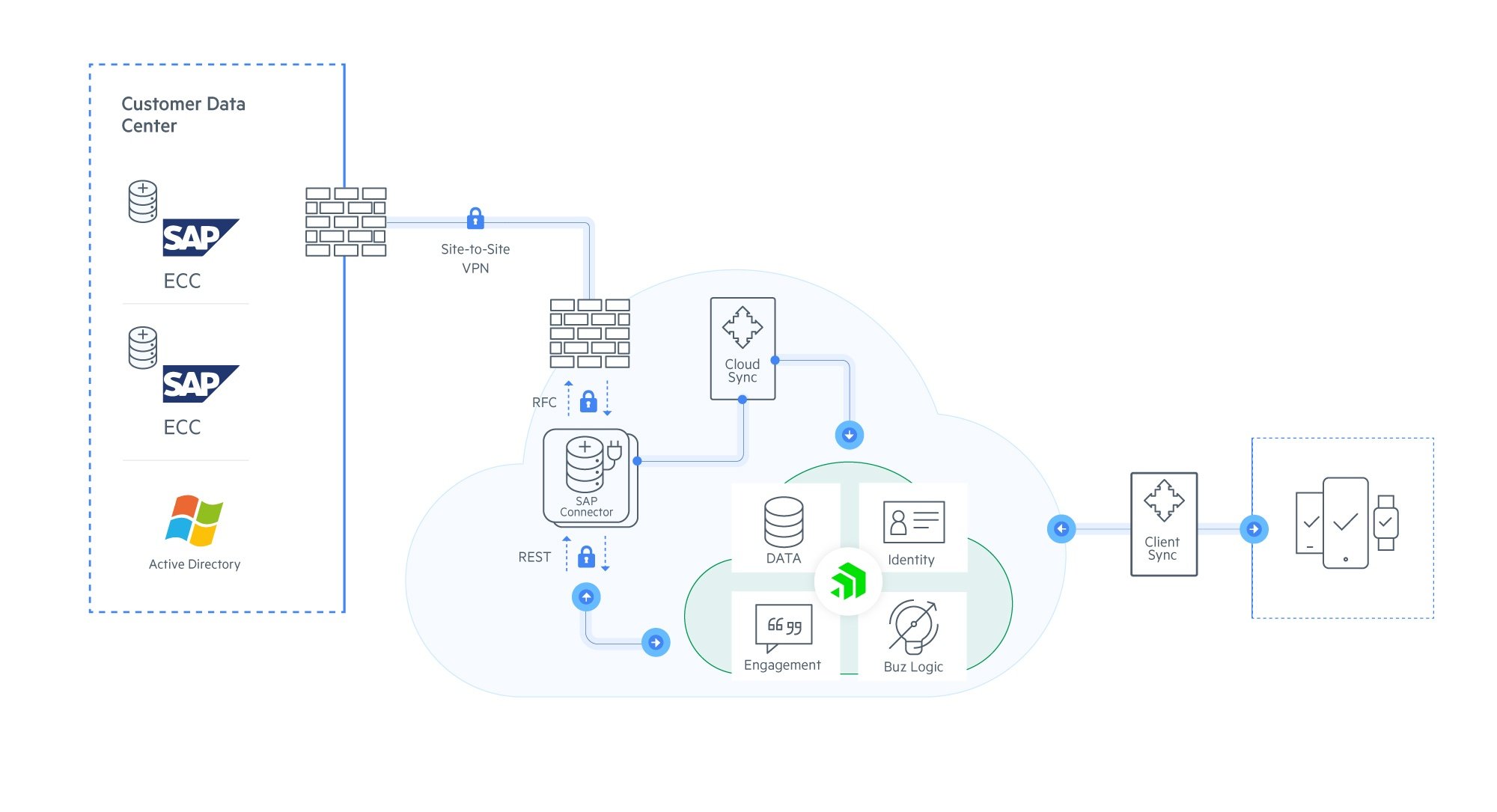SAP Data Synchronization With AWS or Azure Cloud Databases

The Progress Kinvey team has been working with more and more SAP shops looking to accelerate their journey to modern application development in the cloud. Here’s a look at some of the common challenges and solutions we’ve encountered.
Application development in the cloud has many advantages, and SAP Cloud Platform is a great option available from SAP (disclosure: SAP is a Progress tech partner for data access components). Other organizations are looking at cloud platforms across AWS and Azure.
We get a lot of questions from SAP shops around presenting ECC or CRM data to cloud applications running on these platforms:
- How do I present SAP and non-SAP systems to cloud applications?
- How do you deliver sub-second responses to applications from these systems?
- How do you scale these application workloads without impacting SAP?
Many Existing Development Teams and Systems Aren't Ready for This
- Hard to find skill sets—Building on top of existing data sources involves understanding database and application schemas, opening firewalls and going through slow IT processes for access
- Performance—Critical business systems are poorly suited for the sub-second responsiveness essential for slick, modern app experiences
- Scale—Critical business systems are not built to handle the load and concurrency of a modern app distributed across channels such as mobile, web, chat, voice and wearables
What Are the Common Approaches for SAP Shops to Overcome These Challenges?
Option 1: Develop an API Gateway to Present the Data
There are several options that can prevent APIs from SAP using API management solutions or cloud app dev platforms. Here is a blog post contrasting options for building native iOS and Android apps using SAP data using an app platform approach.
Option 2: Migration Tools from Azure and AWS
These can work for select SAP versions and interfaces to import data for the purposes of a migration. However, most organizations we have worked with are not looking to migrate or replatform their entire SAP stack into the cloud.
Option 3: Data Synchronization with Cloud Data Stores
Architects are increasingly looking to this approach to deliver sub-second responses from SAP without impacting core operations. This approach has fewer dependencies and removes a lot of complexity. This continuous replication to cloud app data stores enables developers to:
- Get data in the shape/structure they want
- Take advantage of native capabilities. For AWS as an example, data becomes immediately available to lambda functions or Amplify to build interactive mobile and web apps with real-time updates, offline data access, and data sync with built-in conflict resolution.
Document databases are popular in app development whether it’s the Kinvey MongoDB-based app data store, DynamoDB on AWS, CosmosDB on Azure, or Firebase Realtime Database on Google. But there are also relational, key/value stores, graph, column-family and more.
Our customers are primarily looking at synchronization of SAP data with Kinvey data store for mobile, chat and web app development. Here is a TechTarget article on the benefits of sync and caching of SAP data at Bell & Howell.

How to Simplify Cloud Software Development for Enterprises
I won’t lie—this is not an easy problem to solve if you’re building distributed cloud and on-premises apps on big cloud platforms. Many organizations choose Kinvey for an integrated approach to build mobile apps faster, but there are other organizations that need to have the data available to other cloud consumers.
Please drop us a note and include a message in the form that you’re interested in SAP data synchronization so it routes to me. I would LOVE to chat with you.

